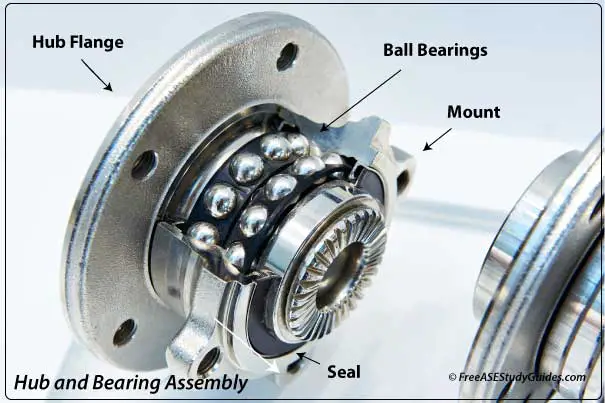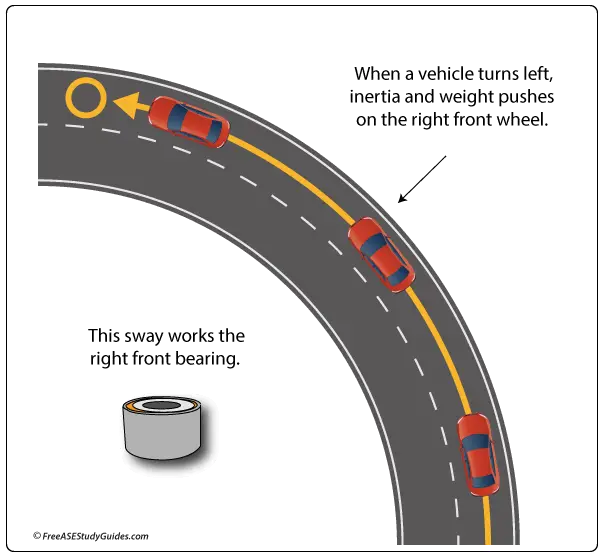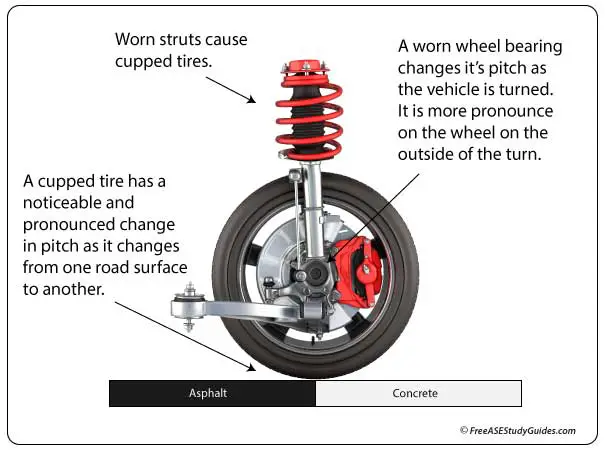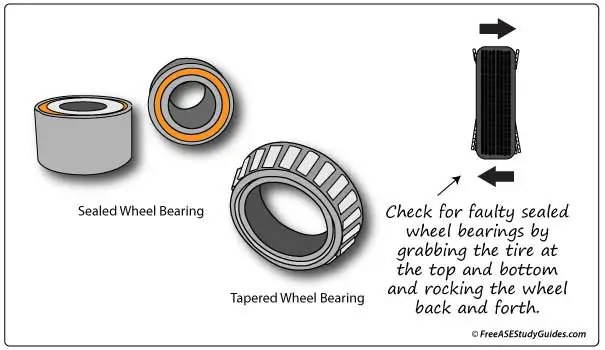Wheel Bearing Diagnosis

Wheel bearings make a growling or grinding sound when worn. A dry and smooth surface is best suited for the test drive. You need to be able to hear the noise over the tire and road surface noise to find the source. Faulty wheel bearings sound similar to aggressive or cupped tire treads.
Road Testing a Wheel Bearing

Notice if the sound goes away or changes pitch while turning. If the noise is loudest and changes pitch during left-hand turns, suspect a faulty right-front wheel bearing. When a vehicle turns left, more of the vehicle's weight transfers to the right front wheel and works that bearing.

When the sound changes pitch when driven on different surfaces and is not affected during turns, look at the tire tread for aggressive patterns or cupping.
Diagnosing Sealed Wheel Bearings

Raise the vehicle and check the bearings by grasping the tire at the twelve and six o'clock positions and then rocking the wheel back and forth. Excess movement indicates a worn wheel bearing. Next, rock the tire back and forth at the three and nine o'clock positions to check the steering rack, suspension components, and linkage for looseness. Finally, have a helper turn the steering wheel while the vehicle is on the ground. Check the taped joints in the steering linkage for looseness and wear.